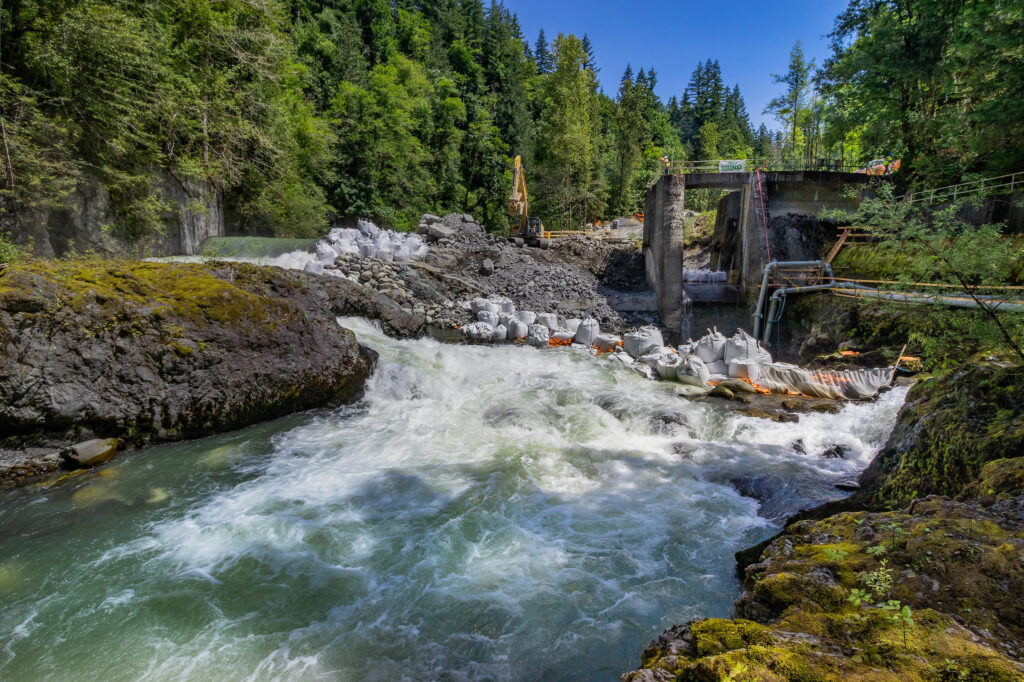
The Middle Fork Nooksack River flows from the glaciers of Mount Baker, with only one dam interrupting its free-flowing course for nearly 60 years. In 2020, the process began to remove the Middle Fork Nooksack Diversion Dam, located near Deming, Washington, and was part of the original supplemental water supply diversion facility for the City of Bellingham. Three years after the dam was removed, we returned and marveled at the resiliency of nature – the riparian vegetation starting to grow back, the free-flowing natural river coursing through the previous dam site – and how creating sustainable infrastructure improvements support restoration of this important cultural resource.
The old water supply diversion infrastructure was replaced with a modern water supply diversion that did not require a dam to operate. This enabled removing the dam, opening 16 miles of cold, pristine habitat, and gave the river an opportunity to adjust back to a more natural state. The project has become a real example of how giving back control to nature, gives benefit to the environment and people.
Additionally, this project helped restore culturally significant resources for the Nooksack Indian Tribe and Lummi Nation, increased resiliency and reliability of Bellingham’s municipal water supply, and removed a safety hazard for whitewater kayakers.
These types of multi-benefit projects are critical, and while complex to plan and implement, can be efficiently achieved through partnerships and use of best project planning, restoration, and management practices to accomplish the end goal. As a result, the project achieves more than one desired goal. For example, fish passage to critical habitat for ESA listed species produces broader social, economic, and ecological benefits.
By removing vulnerable infrastructure from the ever-evolving dynamic riverbed and maintaining the functional purpose of the dam with smarter off-channel infrastructure; liability associated with take of endangered species and costs associated with maintaining the old dam, disappear. As such, the City’s water supply reliability increases, as does species resiliency as volitional access to critical habitat and natural ecological processes, like habitat-forming sediment transport, are restored.
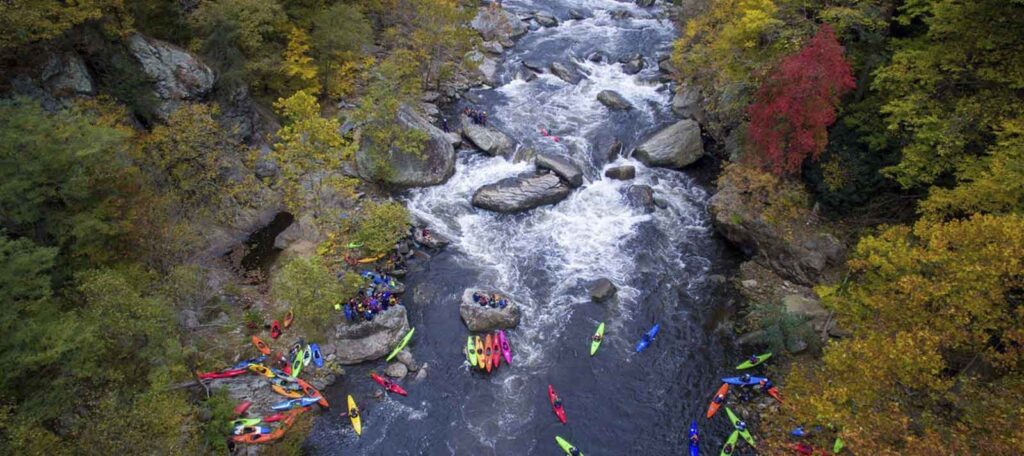
Let's Stay In Touch!
We’re hard at work for rivers and clean water. Sign up to get the most important news affecting your water and rivers delivered right to your inbox.
We can continue to grow natural resiliency and buffer the quality of life and economic impacts of extreme events on communities if we just give nature a chance. By applying what we have learned from the past century of costly landscape transformation, and the last several decades of dam removal and water resource infrastructure modernization, we can support an environment that will in turn sustain us all.
The Middle Fork Nooksack River Fish Passage Project was re-initiated in 2017 when American Rivers became a formal partner, with funding provided by the Paul G. Allen Family Foundation for project management and coordination, as well as planning and construction. The private foundation funding was critical to reinitiating the project with key partners, streamlining technical design development and permitting, and in leveraging over $20 million of public funding for project completion.
The project was a collaborative effort between American Rivers, the City of Bellingham, Nooksack Indian Tribe, Lummi Nation, and Washington Department of Fish and Wildlife, with funding and collaboration from the Paul G. Allen Family Foundation, the City of Bellingham, Resources Legacy Fund, the National Oceanic and Atmospheric Administration, the U.S. Fish and Wildlife Service, and the Puget Sound Partnership. Additional key project partners include Long Live the Kings and American Whitewater.

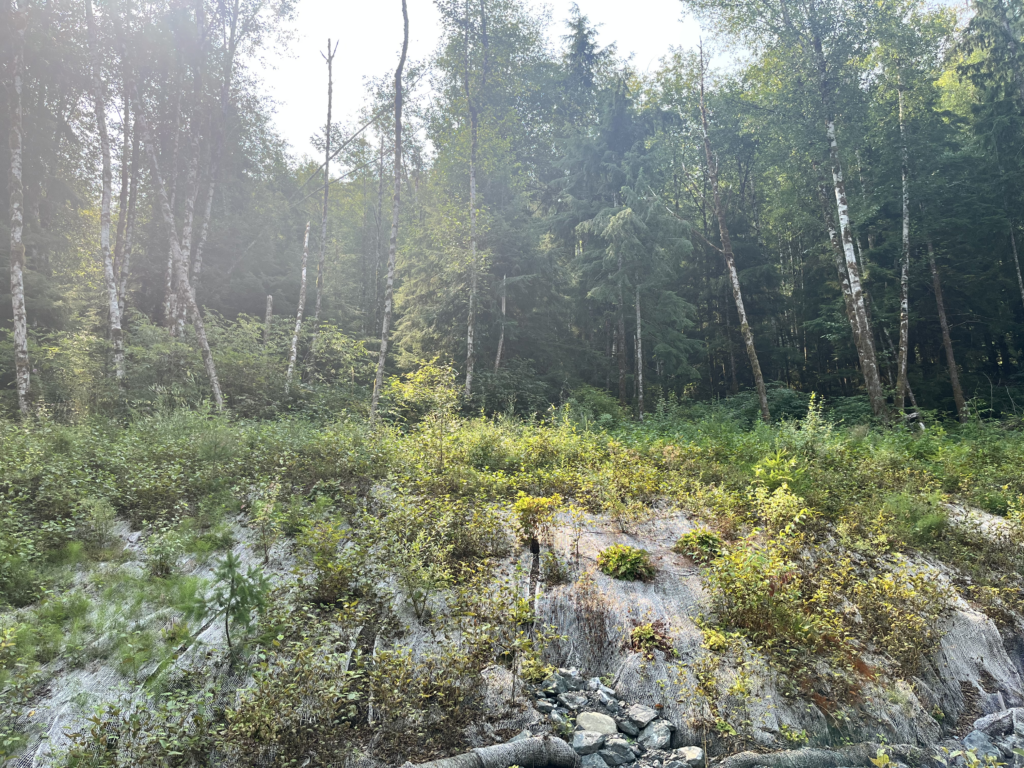
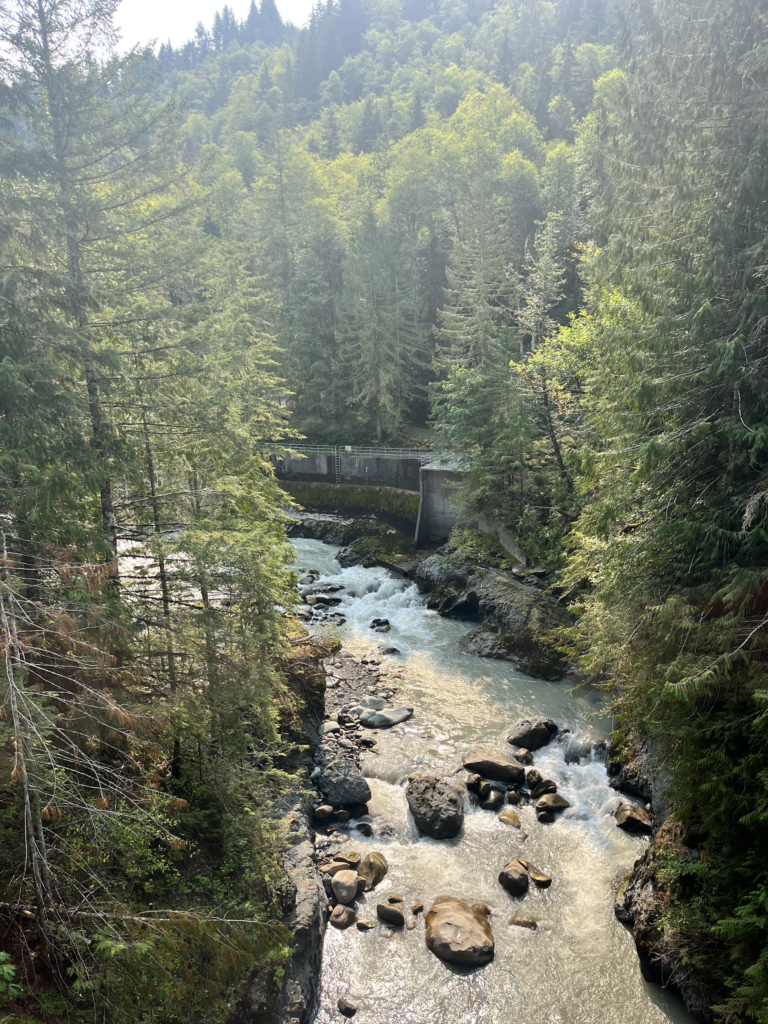
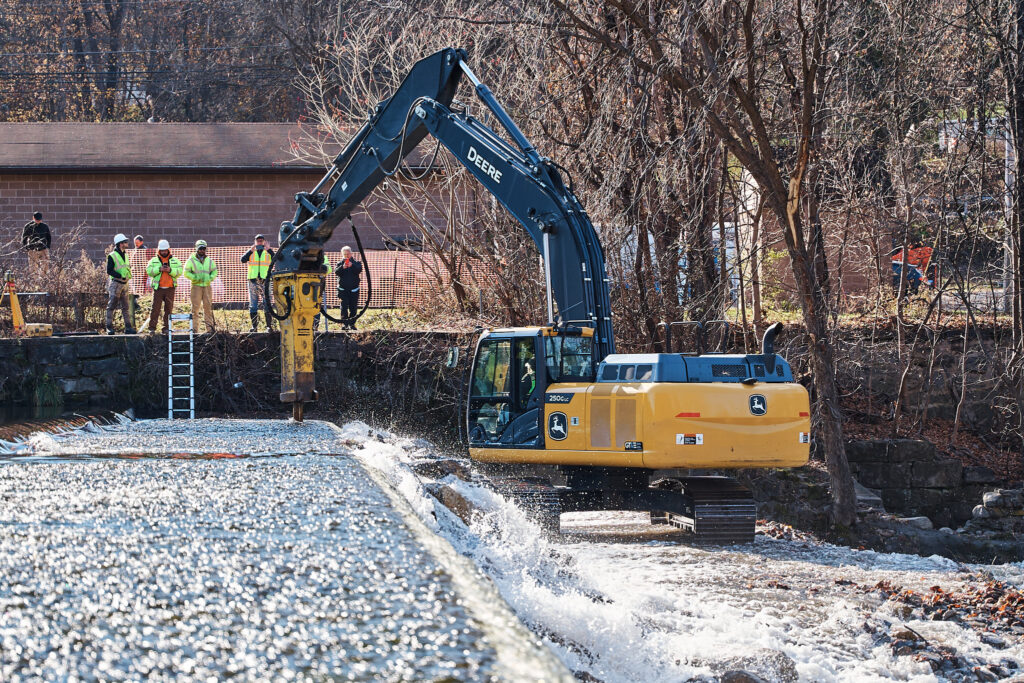
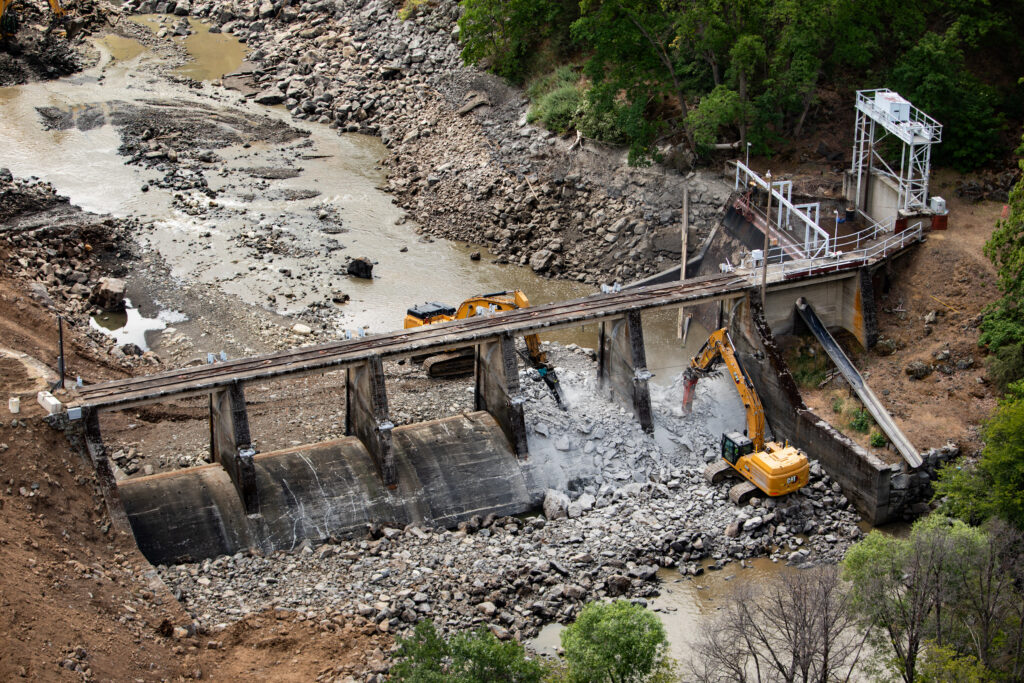

1 response to “Let Nature Be True to Itself and We Will See Resiliency”
So I think I missed it but when was it that you had to have submitt photos for the next calendar.